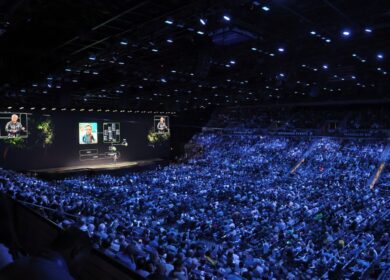By Anton Molodetskiy
The Hoffman Agency, San Jose
As brands and companies become more aware of the benefits of public relations (or perhaps, as more people want to become experts in social media), it is integral for agencies to understand that resting on our laurels can mean the difference between success and stagnation.
The Holmes Report recently interviewed Procter & Gamble’s CEO, Marc Pritchard, who advocates the need for more creativity in public relations and less “fear” when it comes to pitching new ideas to clients. He credits P&G’s PR success partly to the reorganization of its marketing and communications departments. The company is now structured in such a way that makes it operate like a newsroom – integrating the various departments in order to function more swiftly, or as he puts it, in “real-time.” What Pritchard and P&G have actually done, however, is create a coherent media convergence platform for all of their corporate communications.
The idea of media convergence isn’t a new one. In the last few decades, however, media convergence has proliferated into an extensive array of media – TV, radio, Internet, Facebook and Twitter, just to name a few. Consumers are now bombarded with logos, stories and products from every direction. The advertising field is already oversaturated, and public relations may be next.
This is where Pritchard’s input is especially valuable, since he hits it right on the mark. As more and more companies start investing in earned media (the thing that PR is usually associated with), public relations agencies must get consistently more creative in order to break through the general din that is formed by oversaturation. Our need to consistently respond to story angles, opportunities and crises also fosters an atmosphere that resembles that of our main contacts – journalists. To reach these journalists we must consistently deliver creative ideas and substance that draws attention to the story behind the brand.
Whether it’s on social media, on television or in print, the most interesting and engaging story will be the one everyone talks about. We all have the tools to tell that story, but we need a good plan and lots of good old-fashioned guts to make us heard.
An excellent example of creative, edgy PR is the recent response from Bodyform, a feminine hygiene brand in the UK. On October 8, 2012, Bodyform received a long, humorous rant on its Facebook page from a man calling out the product’s false advertising. Over the next several days, his comment went viral, and Bodyform’s PR department realized that it could capitalize on that buzz. The team proactively created and posted a “response” video from a fictional CEO directed to the commenter (Richard) and, as a result, improved its image as a fun, quirky and engaging brand.
Providing interesting and genuinely disruptive content is what can differentiate a good PR agency from a great one. It is what drives both client retention and agency recognition – a golden ticket in these budget-conscious times. As professional storytellers, we need to consistently engage our clients’ audiences through both traditional and new media and retain them with excellent stories. Since competition will only get more fierce as more brands join the conversation, it is our responsibility to be interesting, eloquent and persuasive so that our voices do not get drowned out in an increasingly crowded room.


